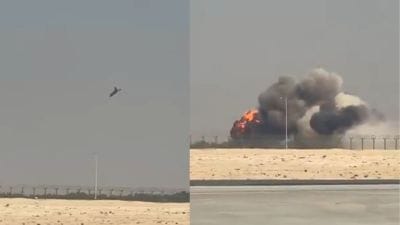Get on the Kailash Mansarovar route
Eleven rounds of border talks between India and China have taken place, and among the issues on the table is the opening of new routes for the Kailash Mansarovar yatra...

Eleven rounds of border talks between India and China have taken place, and among the issues on the table is the opening of new routes for the Kailash Mansarovar yatra and trade. Of late, there has been increasing demand from Ladakh to open the route to Kailash Mansarovar through the Line of Actual Control (LAC) between India and China. Since, two routes have been already opened in the J&K region — the Poonch-Rawalkot and Uri-Muzaffarabad ones respectively — it is only natural to expect the government to open routes in the Ladakh region as well.
This is important for several reasons. One, politically, it will balance the efforts made by New Delhi to make India’s borders soft in J&K. While the Poonch-Rawalkot and Uri-Muzaffarabad routes are now functional for the general public, Ladakh continues to languish without connectivity. True, there are no divided families along the LAC, but that cannot be the only reason for such initiatives. Locals in Ladakh rightly ask that if Nathu La can be opened for trade, why not the Mansarovar route for tourism?
Two, opening the Mansarovar route will benefit Ladakh immensely in economic terms. With a marginal agricultural output and no industrial opportunities, every family here is dependent on the tourism industry and in no other part of India has nature as much hold on tourism as it has in Ladakh. The two land routes to Ladakh via the mighty Zoji La and Manali are closed for half the year. The air route is again dependent on weather conditions and cancellation of flights. The fact that newspapers do not reach Ladakh daily is symbolic of how cut-off this region is from the rest of India. Given this, efforts need to be taken to improve tourist prospects in Ladakh and the Kailash Mansarovar route is key to achieving this. Being invested with religious significance for both Hindus and Buddhists, opening the route will expand tourism significantly. An estimated 40,000 tourists visit Ladakh every year. Locals believe opening this route will double, even triple, this inflow.
Third, opening this route will also have a positive impact inside Ladakh on one of the most backward regions in the country. Starting from Leh town to Demchok, it covers almost 300 km. More than half this region, for security reasons, has been classified as the inner line. Much of the Pangong Lake on the Indian side, Chushul, Tsomori Lake and Hanle areas — that have the potential to attract tourism and thereby increase contact between the locals and foreigners — are restricted. As a result, this region stands isolated in terms of human welfare infrastructure. With no adequate opportunities, the locals of this region have been involved in smuggling goods across the LAC. Opening this route will increase the economic opportunities of people belonging to this sub-region inside Ladakh, which abuts the LAC.
Fourth, from the security perspective, opening this route will also enable the possibility of reaching out to the other side of the LAC.
Now, what are the challenges in opening this route? New Delhi has hinted that China is not comfortable about opening the route for security reasons. One is also not sure how convinced New Delhi is about the political and security benefits (given the costs) in opening the route. If New Delhi believes it will send out the wrong signal that India is willing to accept the status quo along the LAC, then it is time to reconsider such a notion. After all, if the LoC can be softened without reaching a final settlement on Kashmir with Pakistan, why cannot a similar initiative be pursued on the eastern side vis-à-vis China?
Even if China has reservations about opening this route, New Delhi should try and convince it about the benefits that could accrue to both countries, should this happen. As a part of this initiative, India should also make efforts to develop the sub-region from Leh to Demchok in terms of road infrastructure and reconsider the permit system in the inner line. More than 100 km of the road from Nyoma to Demchok along the Indus needs to be paved. India need not stop developing the tourist potential of the sub-region, even if China is slowto open the Mansarovar route. When the Chinese are constructing roads all along its border, it cannot logically object to India doing the same on its territory.
The writer is visiting fellow, Jammu University and assistant director, Institute of Peace and Conflict Studies



- 01
- 02
- 03
- 04
- 05




























